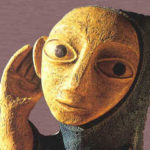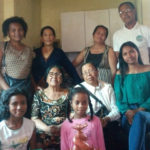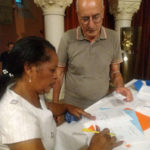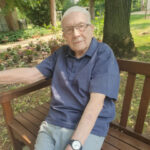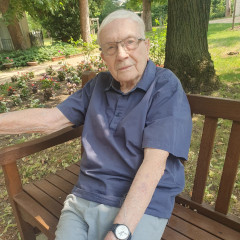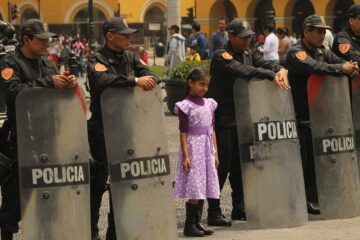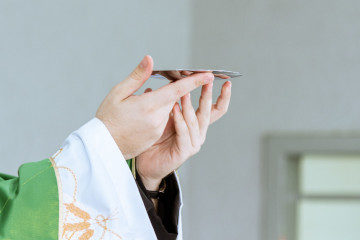 In 1974, the parish priest of St Jacques de Compiègne, Jacques Delaporte, was one of a group of priests who were members of the Secular Institute of the Priests of the Heart of Jesus created in 1790. Its founder, Pierre de Clorivière, wanted the Institute to be open to lay people from the beginning. Jacques Delaporte became aware of this intuition and revived the idea during a retreat he preached there. Several priests who knew what the laity were doing in various religious activities wanted to share with them in greater depth. So they responded to this call, which was in line with their own desire. Quickly, a small mixed group was created with the help of Jacques, who had become Archbishop of Cambrai. The process was soon repeated and other mixed teams were formed in Compiègne, Lille, Brittany and elsewhere. Jacques Delaporte then wanted a canonical statute to be defined for mixed groups mixed groups, priests and lay people, with two objectives to be achieved:
In 1974, the parish priest of St Jacques de Compiègne, Jacques Delaporte, was one of a group of priests who were members of the Secular Institute of the Priests of the Heart of Jesus created in 1790. Its founder, Pierre de Clorivière, wanted the Institute to be open to lay people from the beginning. Jacques Delaporte became aware of this intuition and revived the idea during a retreat he preached there. Several priests who knew what the laity were doing in various religious activities wanted to share with them in greater depth. So they responded to this call, which was in line with their own desire. Quickly, a small mixed group was created with the help of Jacques, who had become Archbishop of Cambrai. The process was soon repeated and other mixed teams were formed in Compiègne, Lille, Brittany and elsewhere. Jacques Delaporte then wanted a canonical statute to be defined for mixed groups mixed groups, priests and lay people, with two objectives to be achieved:
- the elaboration of a life project inspired by the rule of life of the priests but adapted to mixed groups
- obtaining a canonical status of recognition by Rome.
INTERNATIONAL
During the period from 1985 to 1990, numerous exchanges took place with the Congregation for Consecrated Life involving André Loisel, François Morlot and Jacques Delaporte. Jacques Delaporte, president of the commission “Justice and Peace “, offered an international vision of the problems of world peace, which marked our association for an evangelical life in the world. Thus, very quickly, groups were created in Latin and Central America, in Madagascar and in Africa…
RECOGNITION
On 2 February 1987, under the name of ITEV (Institut Tous Etats de Vie), Jacques Delaporte recognised the status of these groups Delaporte recognised the status of these small and lively groups as private associations of the faithful under diocesan law. It opens a reflection on the theme: Marriage and Consecration . It aims to define for couples a path of evangelical radicalism. This reflection is still in progress…
Cor Unum Family
In 1990, at the General Assembly of the three secular institutes, priestly, feminine and masculine the majority of those present proposed the creation of a single Institute open to all states of life, composed of the three secular institutes and our association of the faithful. Unfortunately, the Congregation for Consecrated Life in Rome rejected this project for canonical reasons. In 1992, an extraordinary General Assembly in Nantes decided to create a family composed of the three secular institutes – priests, men, women, all celibate – and our association of the faithful open to all states of life, the future SVECJ. This organisation is authenticated by the GA of 1996.
Approval
A final step was taken when the Roman Congregation approved the SVECJ in 2002 as an association of pontifical right “linked in the sense of canon 725 to the Institute of the Priests of the Heart of Jesus”. In its approval, the Congregation declared that it wished that :
the spirituality of communion, the foundation of the association, will be an epiphany of the Love of God in the world and will energise the mission on the new frontiers of the Gospel and the service of all the Church of the Gospel and the service of all people What we try to live …
Personally, when I became responsible for our Family, I had the joy of working to obtain our canonical status of recognition by Rome. I needed to check with James what I should write to agree with his intuition and what was acceptable to Rome. We had frequent informal meetings, such as the one on the platform at Austerlitz station on his way to Lourdes….
Heritage
Jacques Delaporte has really contributed a lot to the content of what we are trying to live today. He is at the origin of the entry of the laity and their official recognition and, thanks to his many trips and retreats outside Europe, he has been an architect of the international development of our spiritual family. We have experienced with joy his ability to listen. His simplicity, always attentive and even considerate, his bold and persuasive but always respectful attitude have marked us. Her help was demanding and precious in the drafting of our Life Project. Her deep desire to highlight the Heart of Jesus encouraged our small group of writers to go beyond what we had said
The Life Project
Articles 9 and 10 of The Life Project are the work of James
The Word became flesh and dwelt among us” (Jn 1:14). From now on, nothing human is alien to him. In him, we are all associated with the fullness of his divinity. The Heart of Jesus is the most transparent sign of God’s love for humanity for humanity. A passionate love that makes him take our human ways. A gentle and humble love that offers itself without imposing itself. Merciful love, present in wounded hearts. Love that reconciles and opens us to his peace. Love given to the Cross, the summit of free and gratuitous self-giving. Love pierced through, a torrent of living water and fullness which gives birth to the the Spirit.
I receive these articles as a gift that I like to read and reread today. I remember, as we walked through the rice paddies of Madagascar where he preached a retreat, talking with him for a long time about our Project, forgetting the problems of writing, and savouring the good life he proposes to us each day.
Call
In the wake of St. James, Lumen Gentium and Vatican II, I hear three calls to EVS:
- Respect for experiences with an emphasis on group life, sharing and life review
- A deeply Christological desire, based on the Gospel and prolonged prayer
- A missionary commitment that invites us to be witnesses of Christ in the world for a Church always in genesis under the founding breath of the Spirit.
thank you James! Philippe Hug de Larauze, SVECJ Former Director General
